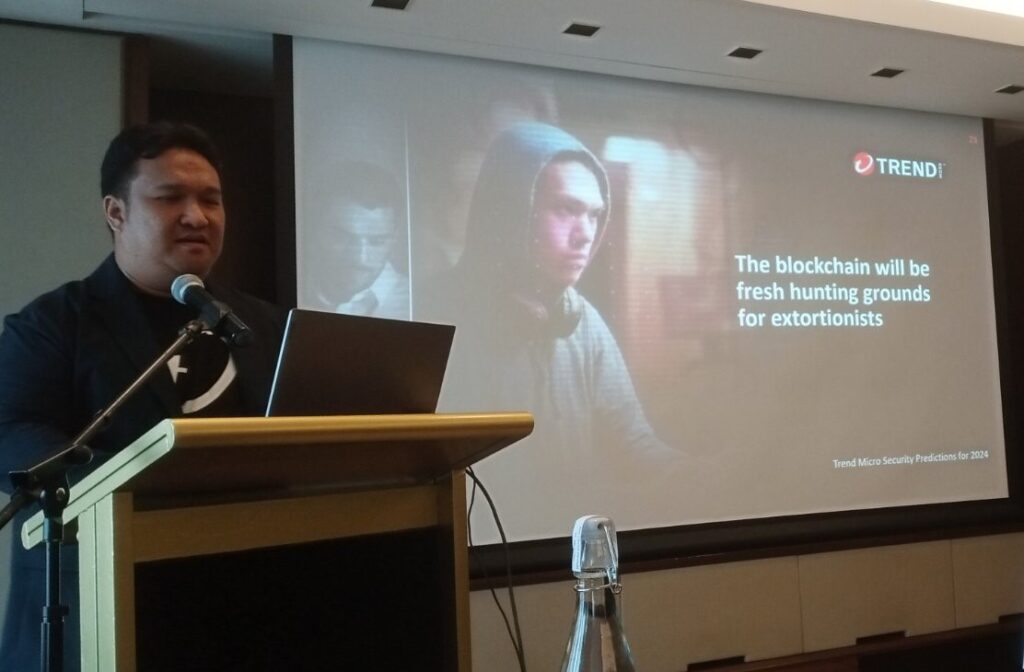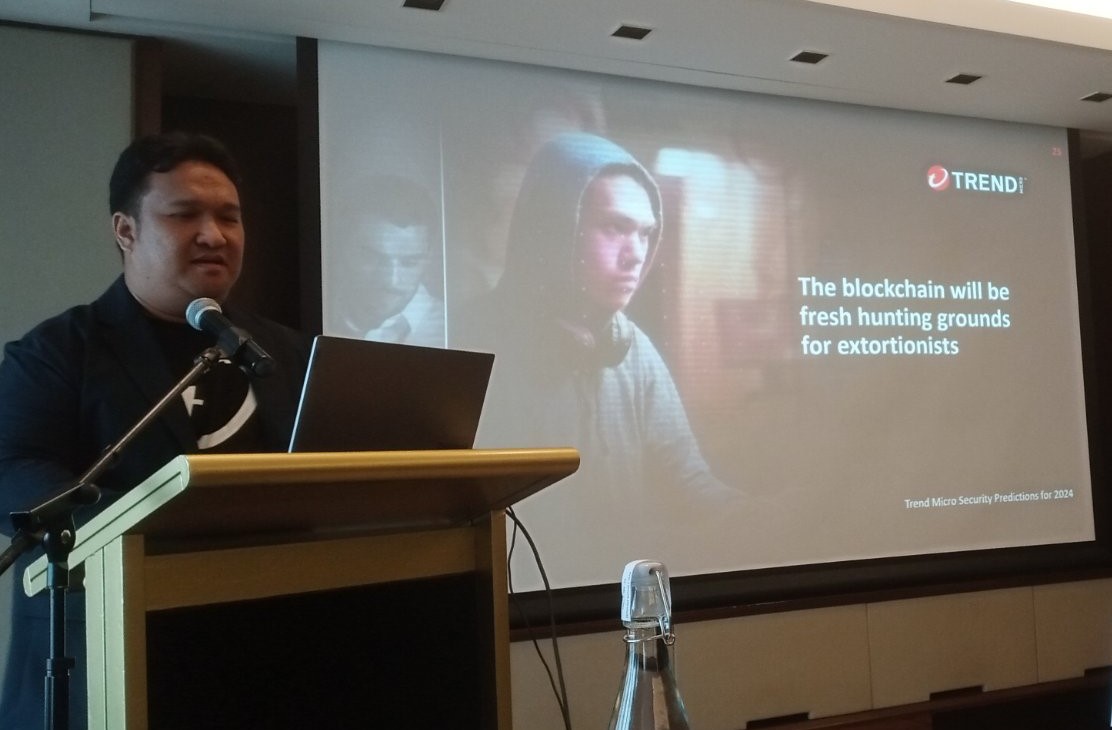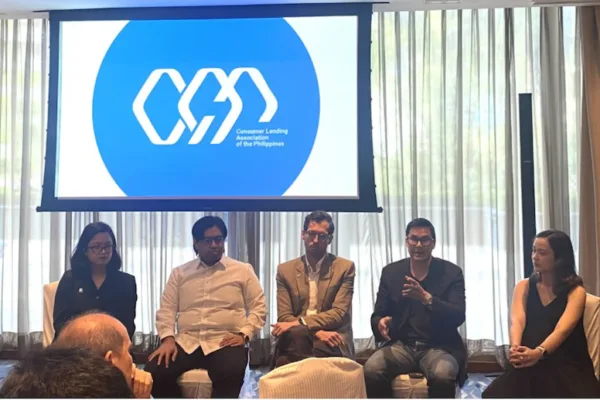by Jan Michael Carpo, Reporter
AI-powered cyber attacks continue to pose a significant threat to organizations of all sizes, and thoughts like “my business is too small to be a target” no longer hold true today.
This was one of the key ideas highlighted during a recent media briefing in Makati conducted by Trend Micro Incorporated (TYO: 4704; TSE: 4704), a global cybersecurity leader, which also issued a warning on the transformative role of generative AI (GenAI) in the cyber threat landscape.
The security company also cautioned companies in the Philippines to be wary of the upcoming “tsunami of sophisticated social engineering tactics and identity theft-powered GenAI tools.”

Monte de Jesus, Senior Threat Researcher at Trend Micro Philippines, while presenting the company‘s cyber threat security predictions for 2024
“Advanced large language models (LLMs), proficient in any language, pose a significant threat as they eliminate the traditional indicators of phishing such as odd formatting or grammatical errors, making them exceedingly difficult to detect. Businesses must transition beyond conventional phishing training and prioritize the adoption of modern security controls. These advanced defenses not only exceed human capabilities in detection but also ensure resilience against these tactics,” shared Eric Skinner, VP of market strategy at Trend Micro, during the press briefing.
The widespread availability and improved quality of GenAI, coupled with the use of Generative Adversarial Networks (GANs), are expected to disrupt the phishing market in 2024. This transformation will enable the cost-effective creation of hyper-realistic audio and video content — driving a new wave of business email compromise (BEC), virtual kidnapping, and other scams, Trend predicts.
Given the potentially lucrative gains that threat actors might achieve through malicious activities, threat actors will be incentivized to develop nefarious GenAI tools for these campaigns or to use legitimate ones with stolen credentials and VPNs to hide their identities.
AI models themselves may also come under attack in 2024.
While GenAI and LLM datasets are difficult for threat actors to influence, specialized cloud-based machine learning models are a far more attractive target. The more focused datasets they are trained on will be singled out for data poisoning attacks with various outcomes in mind — from exfiltrating sensitive data to disrupting fraud filters and even connected vehicles.
Such attacks already cost less than US$100 to carry out.
In turn, these trends could lead to increased regulatory scrutiny and a push from the cybersecurity sector to take matters into its own hands.
“In the coming year, the cyber industry will begin to outpace the government when it comes to developing cybersecurity-specific AI policy or regulations,” stated Greg Young, VP of cybersecurity at Trend.
“The industry is moving quickly to self-regulate on an opt-in basis,” he added.

Other Security Predictions for 2024
A surge in cloud-native worm attacks — these attacks will target vulnerabilities and misconfigurations and will use a high degree of automation to impact multiple containers, accounts and services with minimal effort.
Cloud security will be crucial — especially for organizations, which will need to address security gaps in their cloud environments, highlighting the vulnerability of cloud-native applications to automated attacks. Proactive measures, including robust defense mechanisms and thorough security audits, are essential to mitigate such risks.
More supply chain attacks — which will target not only upstream open-source software components but also inventory identity management tools, such as telco SIMs, which are crucial for fleet and inventory systems. Cybercriminals would also likely exploit vendors’ software supply chains through CI/CD systems, with a specific focus on third-party components.
Attacks on private blockchains — are expected to increase further as a result of vulnerabilities in the implementation of several private blockchains. Threat actors could use these rights to modify, override, or erase entries and then demand a ransom. Alternatively, they could try to encrypt the entire blockchain if it’s possible to seize control of enough nodes.
To read more about Trend Micro’s 2024 cybersecurity predictions, please visit: https://www.trendmicro.com/vinfo/us/security/research-and-analysis/predictions/critical-scalability-trend-micro-security-predictions-for-2024








